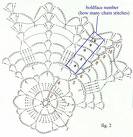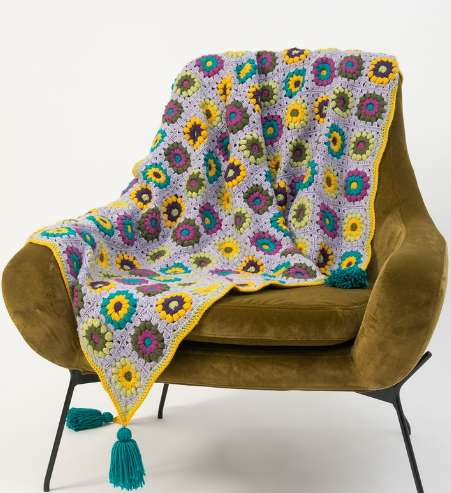
 In this era of the world wide net, we are able to befriend crocheters from all over the world. While many of them are fluent in English (er…American), many more are not. And, those of us in the US are typically not fluent in the language of any other country. English is the language of the internet – but crochet has a language of its own and it becomes unintelligible when run thru one of those lovely free translation sites. So, what is the universal language of crochet (ULC)? It must be something that we can all read no matter what continent we’re on. It must be both mathematical and esthetic.
In this era of the world wide net, we are able to befriend crocheters from all over the world. While many of them are fluent in English (er…American), many more are not. And, those of us in the US are typically not fluent in the language of any other country. English is the language of the internet – but crochet has a language of its own and it becomes unintelligible when run thru one of those lovely free translation sites. So, what is the universal language of crochet (ULC)? It must be something that we can all read no matter what continent we’re on. It must be both mathematical and esthetic.
Thus, we enter the world of representational language. In crochet, we have several representational modes. We have symbols – those widely used squiggles that indicate where to put one’s hook and what stitch to make. There are charts for filet – symbols to show us how to create a flat design in sc, dc, and tr. Next are graphs – similar to charts but typically used with yarn to create a picture of different colors in a field of solid color. Again, we are given symbols to indicate what stitches go where and in what color(s). Schematics are useful in all of the above, but especially in creating garments using any method. Schematics can show us what size and shape a sleeve should be and how to attach row A in slot B. Schematics are one of the most useful tools any designer can add to a pattern to clarify its meaning.
It took me quite a while to comprehend the benefit of symbols and schematics. I was resistant. VERY RESISTANT. See, I was an English Teacher in a former life. Why would I need any help interpreting a written pattern? Well – a picture – or schematic – is definitely worth a million words. And symbols replace words, making patterns originating any place in the world accessible to all of us. Just visit a Russian or Japanese crochet site to see the value of learning to read and interpret symbol crochet!

Hi there, so glad to find this site, my mum only taught me how to crochet of diagrams. As my native language is Afrikaans I find it difficuilt to learn in english. Where can I get diagram paterns please!!!
Tanja
TANJA – Here are some sites to get you started:
lace charts:
http://www.coatscorrente.com.br/scripts/…
http://www.jessica-tromp.nl/crochetpatte…
Another site that I recall has symbols for free patterns is the http://www.garnstudio.com site. click on the main site, then pick your language (they have German which my German teacher daughter says is very close to Afrikaans) then select crochet patterns. There are lots of goodies there. jd
Hi everyone,
My aunts used to sit and talk and laugh in the lazy afternoons when all the house work was done and crochet, seing them is how I got interested in crochet and one of them, taugh me how to do it.
I have done a bunch of projects but only from diagrams and now I can’t find magazines with them in it.
Any sugestions, which ones and where to get it.
Many thanks.
Ana
Ana,
Can you post some pictures of your projects? That would give others a better opportunity to identify the project and its pattern source. You might also enjoy looking through a collection of older crochet books like the Golden Hands set and other magazines and books of the era when your aunts were actively crocheting. I find it enormously entertaining to read crochet magazines and books, finding a lot of inspiration in the older patterns. Most of those magazines are still moving around through crocheters’ hands.
Good Luck!
jd